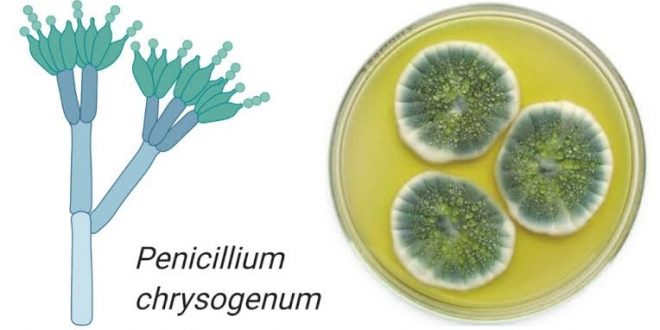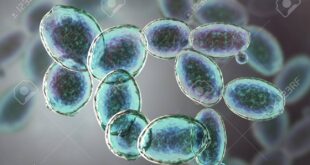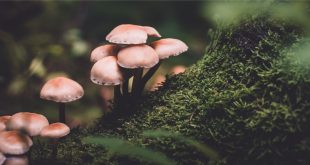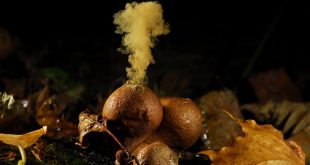We usually think of fungi as organisms that cause diseases and rot food. But fungi are important to human life in many ways. The manifestations of this group of organisms have been known for thousands of years. Since the first toast was proposed over a shell full of wine and the first loaf of leavened bread was baked. So, what are the beneficial roles of fungi in human life?
There are a lot of aspects where fungi play important roles. They are also essential to many household and industrial processes. Notably in the making of bread, wine, beer, and certain cheeses, penicillin, and so on.
Best safe and secure cloud storage with password protection
Get Envato Elements, Prime Video, Hotstar and Netflix For Free
Best Money Earning Website 100$ Day
#1 Top ranking article submission website
Used as food
i. Edible mushrooms
Many gourmets and medicinal types of mushrooms are now commercially cultivated.
Mushrooms and toadstools are not the same. Though toadstools are identical twins to mushrooms, they have huge differences between them. Mushrooms are edible and nonpoisonous while toadstools are inedible and highly poisonous.
ii. Nutrition:
Mushrooms are a low-calorie food usually eaten cooked or raw and as a garnish to a meal. Dietary mushrooms are a good source of vitamin B. Such as riboflavin, niacin, and pantothenic acid. Also some essential minerals- selenium, copper, and potassium. They also have fat and carbohydrates. But there is an absence of vitamin C and sodium. In terms of the amount of crude protein, mushrooms rank below animal meats, but well above most other foods, including milk, which is an animal product. Furthermore, mushroom protein contains all the nine essential amino acids required by man.
Nutritional values per 100g of Mushrooms (Brown, Italian or Crimini, raw) are as follows [Source: USDA Nutrient Database]:
| Energy | 27Kcal |
| Carbohydrate | 4.1g |
| Fat | 0.1g |
| Protein | 2.5g |
| Thiamine(B2) | 0.1mg |
| Riboflavin(B2) | 0.5mg |
| Niacin(B2 ) | 3.8mg |
| Pantothenic acid(B2) | 1.5mg |
| Vitamin C | 0 mg |
| Calcium | 18mg |
| Phosphorus | 120mg |
| Potassium | 448mg |
| Sodium | 0mg |
| Zinc | 1.1mg |
It contains natural ergosterols which produce vitamin D2 when exposed to ultraviolet light. However, a process is now exploited for the functional food retail market.
Food processing
Nowadays many fungal enzymes are being used in food processing industries and their impact is going to be felt much more in the upcoming years.
i. Making Bread:
The wonderful texture of the bread is created by the yeast Saccharomyces cerevisiae, which ferments a small amount of sugars and liberates bubbles of carbon dioxide that become trapped in the dough and leave it.
C6H12O6 → 2C2H5OH ⇑ + 2CO2 ⇑
ii. Brewery industry:
Different species of Saccharomyces such as S. cerevisiae, S. pastorianus, S. eubayanus are used to ferment barley and grapes and produce Beer and Wine.
iii. Blue Roquefort Cheese:
The Blue Roquefort Cheese is ripened by Penicillium roquefortii. When the curd is ready, breadcrumbs with Penicillium roquefortii growing on them are added, then the cheese is incubated until it ripens.
The fungi Penicillium roquefortii grows throughout the curd, assisted to some extent by holes punched in the substrate by the cheesemaker. The color of the blue-green veins that develop is due to the presence of innumerable conidia of the fungi.
iv. Soft-ripened Camembert cheese:
Ripened by Penicillium camembertii. These moulds form a dense white mycelial mat outside of the cheese. It gives the cheese a wonderfully smooth, soft, almost buttery consistency. The interior of a really ripe Camembert will have a viscous, almost fluid texture, and may ooze gently when cut.
v. Brown color of Chocolate:
Chocolate is made from the beans of a small tree, Theobroma cacao. Cacao beans are fermented over a period of 5-6 days. This is done by a diverse array of apparently naturally occurring yeasts (29 species belonging to 11 genera have been isolated).
The most frequently isolated taxa are Saccharomyces chevalieri, Pichia membranaefaciens, Candida krusei, Torulopsis holmii, and Torulopsis candida. During this fermentation, the beans develop the brown color we all recognize.
Industrial mycology
Primary and secondary metabolic products of fungi are antibiotics, organic acids, vitamins, enzymes, and alkaloids. The industrial fermentation process is for Penicillin production.
i. Antibiotics:
In 1927, Sir Alexander Fleming was growing pure colonies of Staphylococcus aureus (Gram-positive) on plates of culture medium when one of the plates became contaminated by a mould.
A wide clear zone around the fungal colony showed Fleming that something was diffusing out from the mould and killing or inhibiting the bacteria. He isolated the mould and found that it was a species of Penicillium, P. notatum (now known as P. chrysogenum). So, Fleming named the unknown substance penicillin and brought it to the attention of other scientists.
In March of 1942, Anne Sheafe Miller Suffering from Streptococcus infection. Anne was lucky. Because she was the right patient in the right place at the right time. Though penicillin was discovered in 1929, it didn’t save a life until 1942 (13 years later). After the Pearl Harbour disaster in World War II, the Rockefeller Foundation set up collaboration among British and American scientists, biochemists, mycologists, and pathologists in Government research institutes, Universities, and Industry. Mass production of penicillin was started.
In 1945 Fleming, together with Florey and Chain, shared a Nobel Prize. Because of the involvement in the isolation and characterization of penicillin and its testing as a therapeutic agent.
An important antifungal antibiotic, griseofulvin, was derived from Penicillium griseofulvum. It was described as early as 1936. but It came to use only during the 1950s. They were used as a systemic fungicide against plant pathogenic fungi. Also, they were taken orally in doses up to a gram per day to combat recalcitrant dermatophyte infections (tineas).
Swiss pharmaceutical company Sandoz routinely collected soil samples for microbiological analysis. In 1970 a soil sample collected in Norway yielded a culture of Tolypocladium inflatum (now called Tolypocladium niveum). It was found to produce a novel cyclopeptide with some interesting antifungal activity. Cyclosporine proved effective against rheumatoid arthritis since the chronic inflammation in that condition was immune-mediated. It is an effective immuno suppressant.
ii. Organic acids:
Citric acid is used in foods and soft drinks. Also used in cosmetics and leather manufacture. It is produced on an industrial scale by Aspergillus niger. It is a major industrial fungal fermentation product after ethanol. Fumaric acid, used in making wetting agents and alkyd resins, is produced by Rhizopus nigricans. Gibberellic acid, derived from Fusarium moniliforme, is a plant growth hormone.
iii. Vitamin:
Riboflavin (vitamin B2), produced by Eremothecium ashbyi, is a vitamin supplement.
iv. Enzymes:
Fungi secrete (that is, produce and release) a variety of enzymes into their surroundings. They do this in order to digest food or to dissolve their way through solid substrates. Fungal enzymes that have been industrially exploited are as follows:
- Amylase brings about the hydrolysis of starch to dextrin and sugars. And it is used in the preparation of adhesives and sizings. Also to clarify fruit juices. Produced by Aspergillus niger, Aspergillus oryzae.
- Invertase catalyzes the hydrolysis of sucrose to glucose and fructose. And it is used in candy-making. Also in the preparation of syrups that will not crystallize. Produced by Aspergillus flavus, Aspergillus caespitosus, Saccharomyces cerevisiae.
- Peroxidase produced by the mushroom Coprinus can decolorize dyes that have migrated from dark to light clothes during laundry. But won’t work in hot soapy water.
- Fortunately, directed molecular evolution (very neo-Darwinian) has produced a heat-resistant version of the enzyme. Pectinase is used to clarify fruit juices. And to accelerate the retting of flax (the liberation of the fibers from the stems). Also used for preparation for the making of linen. It is produced from Aspergillus niger.
- Cellulases hydrolyze cellulose to cellobiose and are used in food processing. They are usually derived from Trichoderma.
- The current craze (2005) for stone-washed jeans has also been possible not by stones but by the activities of Trichoderma. (Trichoderma reesei and Trichoderma atroviride) The jeans are steeped in a vat containing Trichoderma. Its cellulases partially digest the fibers of the material. And produce the much-priced stone-washed softness and appearance.
- Alpha-galactosidase derived from Aspergillus niger is the active ingredient of “Beano”. Beano is a product designed to prevent flatulence when beans or brassicas are eaten. Many people simply can’t metabolize the galactose in these foods. These foods are fermented by bacteria in the gut. Beano breaks down the galactose. And so it prevents the embarrassing accumulation of gas, inhibits fart (to break wind), Aspergillus oryzae.
Fungi in Agriculture
i. Fungus in soil
(members of Ascomycetous and Basidiomycetous fungi )
- Decomposes organic matter
- Decreases plant pathogen in soil
- Improve soil structure.
ii. Decomposer:
Nitrogen and carbon recycling in agriculture and forestation.
iii. Mycorrhizae:
(Myco= fungus; Rhizon= root). It is a mutualistic relationship between the roots of vascular plants and fungi. Fungi help plants in uptake nutrients from soil and plant share their photosynthetic product with fungi.
Plant benefits include
- Nutrient and water uptake improvement
- Improvement of root growth
- Improved plant growth and yield
- Disease resistance improvement
- Reduced transport shock
- Reduced drought stress
Mycorrhizal fungi help in the mobilization of soil phosphorus and nitrogen into plants. For many cases, the establishment of a new forest becomes difficult unless mycorrhizal fungi are artificially introduced into soil by inoculation.
iv. Plant-growth-promoting-fungi (PGPF)
Some rhizosphere fungi develop mutually beneficial relationships. They are able to promote plant growth upon root colonization. They are functionally designated as ‘plant-growth-promoting-fungi’ (PGPF). PGPF are non-pathogenic, soil-inhabiting saprophytes. They have been reported beneficial to several crop plants not only by promoting their growth but also by protecting them from diseases.
ii. Fungi as a biofertilizer potential:
Application of Trichoderma hamatum or Trichoderma koningii has been reported to result in nearly 300% plant yield increase in some greenhouse experiments. Trichoderma harzianum T22 has been shown to increase root development in maize and other plants. And this may last for the entire lifespan of annual plants and can be induced by adding small amounts of fungal conidia to seeds. Such addition can result in an increased yield and biomass, as well as increased drought tolerance.
iii. Bio-pesticides:
Chemical pesticides are often very toxic to many non-target organisms, including the natural enemies of the pests and also to humans. The elimination of natural enemies may allow outbreaks of secondary pests, and rapid resurgence of the target species, once the pesticide loses its activity.
iv. Fungal insecticides (Mycoinsecticide):
Control of arthropod or other invertebrate pests by fungi.
1. Boverin: Beauveria bassiana (Hyphomycetes). Conidia of the fungus are now mass-produced as a preparation called Boverin. And have been used in Russia since 1965 to control the Colorado potato beetle (Leptinotarsa: Coleoptera).
2. GreenGuard / Green Muscle: Metarhizium anisopliae is also now used for biocontrol of locusts and grasshoppers in Australia. It is produced by Australian Seed Inoculants Pyt. Ltd. under the trade name ‘GreenGuard’.
v. Mycoherbicides:
Control of weeds by Plant Pathogenic Fungi Mycoherbicides.
- Farmers may use broad-spectrum herbicides like Paraquat or selective weed killers such as 2,4-D and 2,4,5-T. These control dicotyledonous weeds in monocotyledonous crops. Fortunately, many of our staple food plants are grasses- wheat, corn, rice, millet, sorghum, oats, barley, rye. But no herbicide is available to control annual grasses in small grains.
- Puccinia chondrillina, a Mediterranean plant, Chondrilla juncea (‘rush skeleton weed) was accidentally introduced to Australia in the early 1900s, leaving its natural enemies behind. It spread rapidly and infested hundreds of thousands of hectares of wheat lands. It also competed with wheat for water and nitrogen and clogging harvesting equipment. By the 1940s some farmers had given up growing wheat. Those who persevered were later able to spray with 2,4,5-T to control it, though the cost of spraying vast areas, which in Australia give low yields anyway, was almost prohibitive.
- Another Australian immigrant, Hakea sericea, causes similar problems, but in some places is naturally killed by Colletotrichum gloeosporioides. Distribution of the Colletotrichum conidia by helicopter.
vi. Biocontrol potential Mycoparasitism / Hyperparasitism:
Fungi in Biocontrol of Other Fungi.
Trichoderma viride parasitizes the hyphae of many other fungi and produces an antibiotic. This double-barreled approach allows it to deal effectively with soil pathogens. Such as Rhizoctonia solani that causes a variety of diseases on many hosts. and Armillaria mellea, which kills many species of trees.
Myconanotechnology
Nanoparticles are metal particles smaller than 100 nm that can be synthesized in numerous shapes (e.g. spherical, triangular, rods) from various metal ions. Nanoparticles have many different applications and are used in a number of fields. Including medicine, pharmacology, environmental monitoring, and electronics (Liu, 2006).
Myco-nanotechnology (myco = fungi; nanotechnology = the creation and exploitation of materials in the size range of 1–100 nm.) Fungi have a number of advantages for nanoparticle synthesis compared with other organisms. Particularly as they are relatively easy to isolate and culture, and secrete large amounts of extracellular enzymes (Mandal et al., 2006). Many of the proteins secreted by fungi are capable of hydrolyzing metal ions quickly and through non-hazardous processes. As a result, fungi have the potential to produce nanoparticles faster than some chemical synthesis methods.
Examples of metal nanoparticles produced from fungi.
| Fungal species | Name of Nanoparticles |
| Fusarium oxysporum | cadmium sulfide (CdS), zirconia (ZrO2), silica (SiO2) , titania (TiO2), silver (Ag), platinum (Pt), magnetite etc. |
| Verticillium sp. | gold (Au) |
References
- This article is completely based on the lecture of Dr. Abul Bashar, Professor, Department of Botany, University of Dhaka.
- Introduction To Mycology by Alexopoulos.
Revised by
- Noushin Sharmili Suzana on 19th August 2021.
 Plantlet The Blogging Platform of Department of Botany, University of Dhaka
Plantlet The Blogging Platform of Department of Botany, University of Dhaka






Very informative.
Thank you Apu.